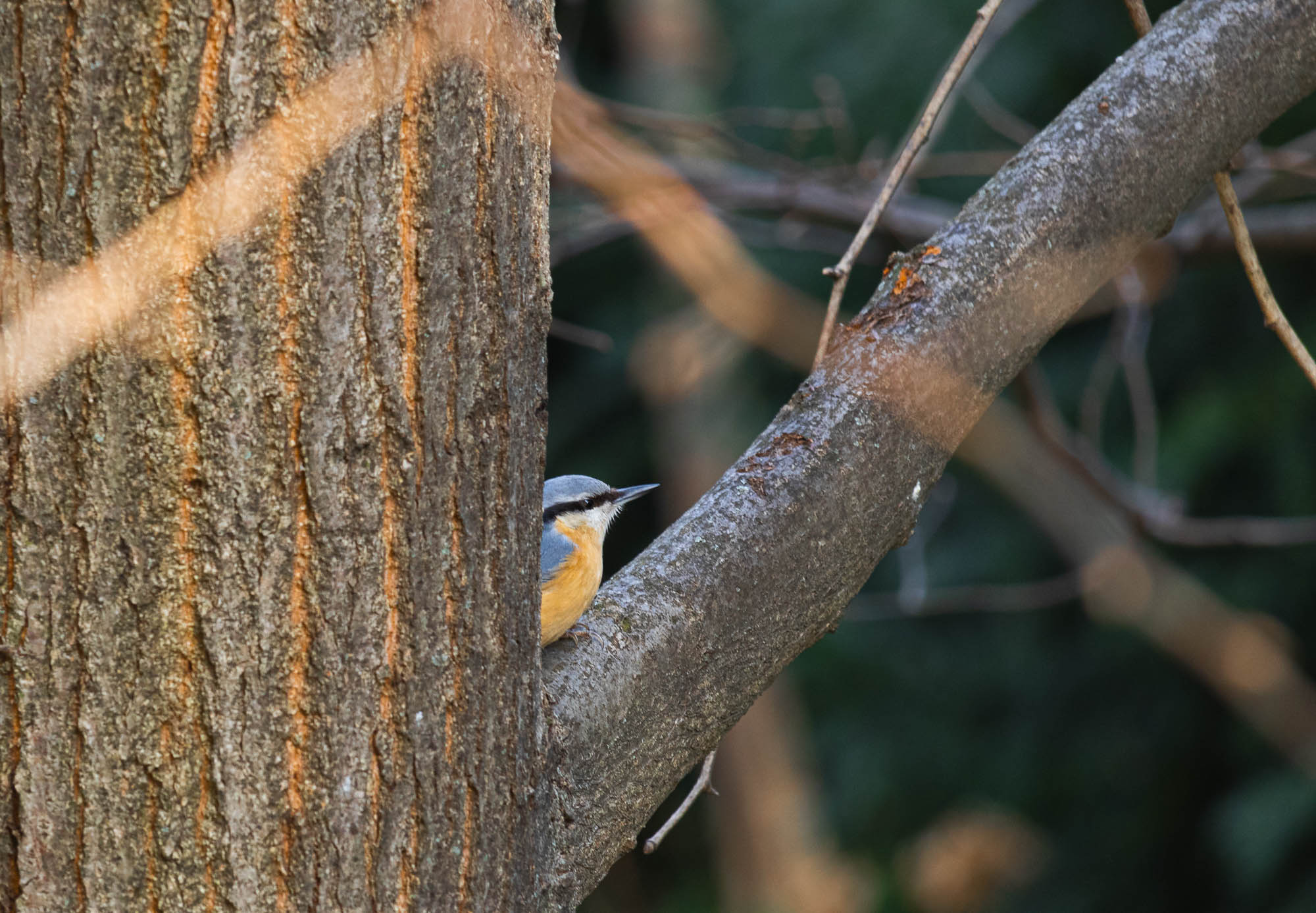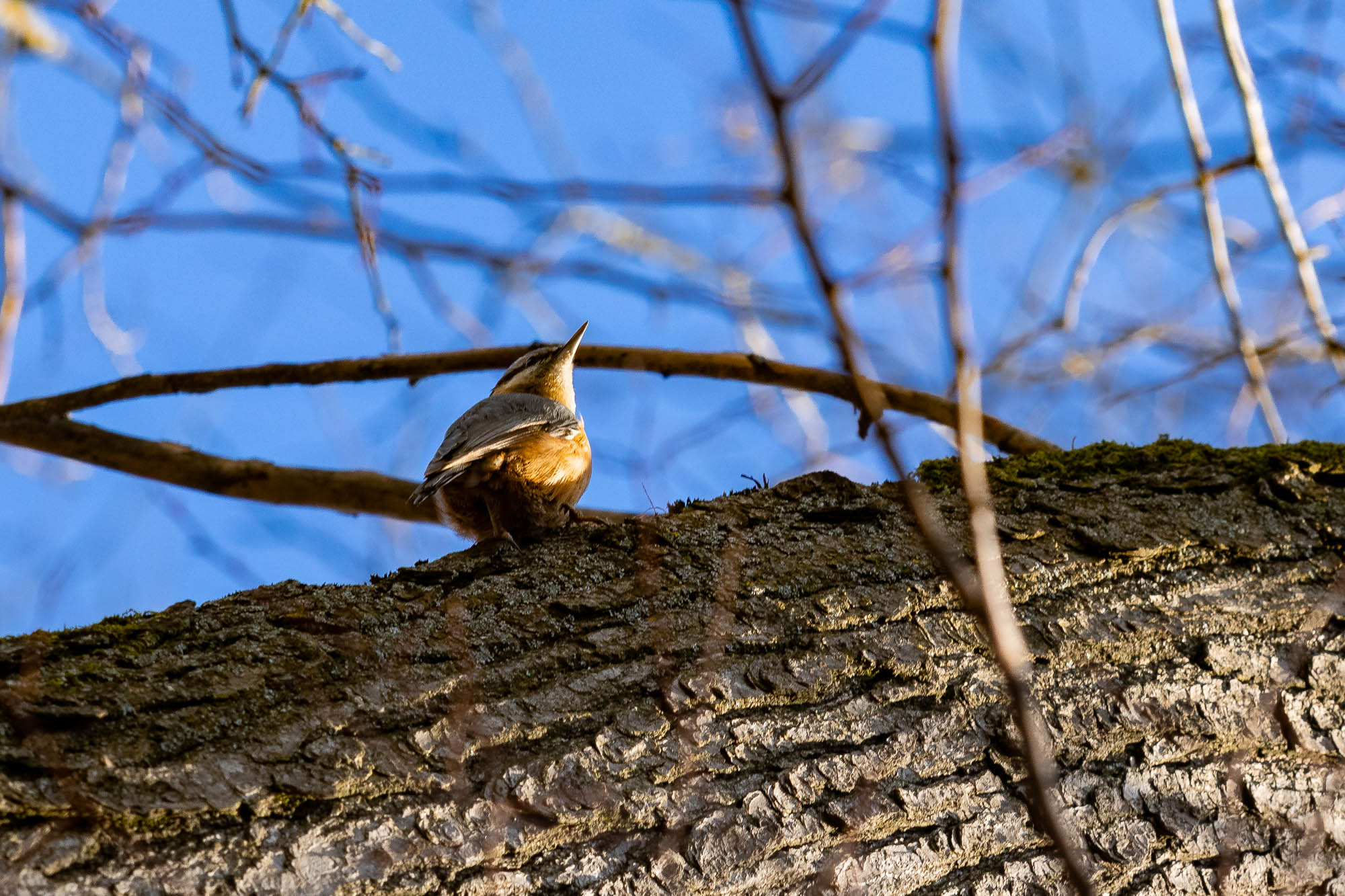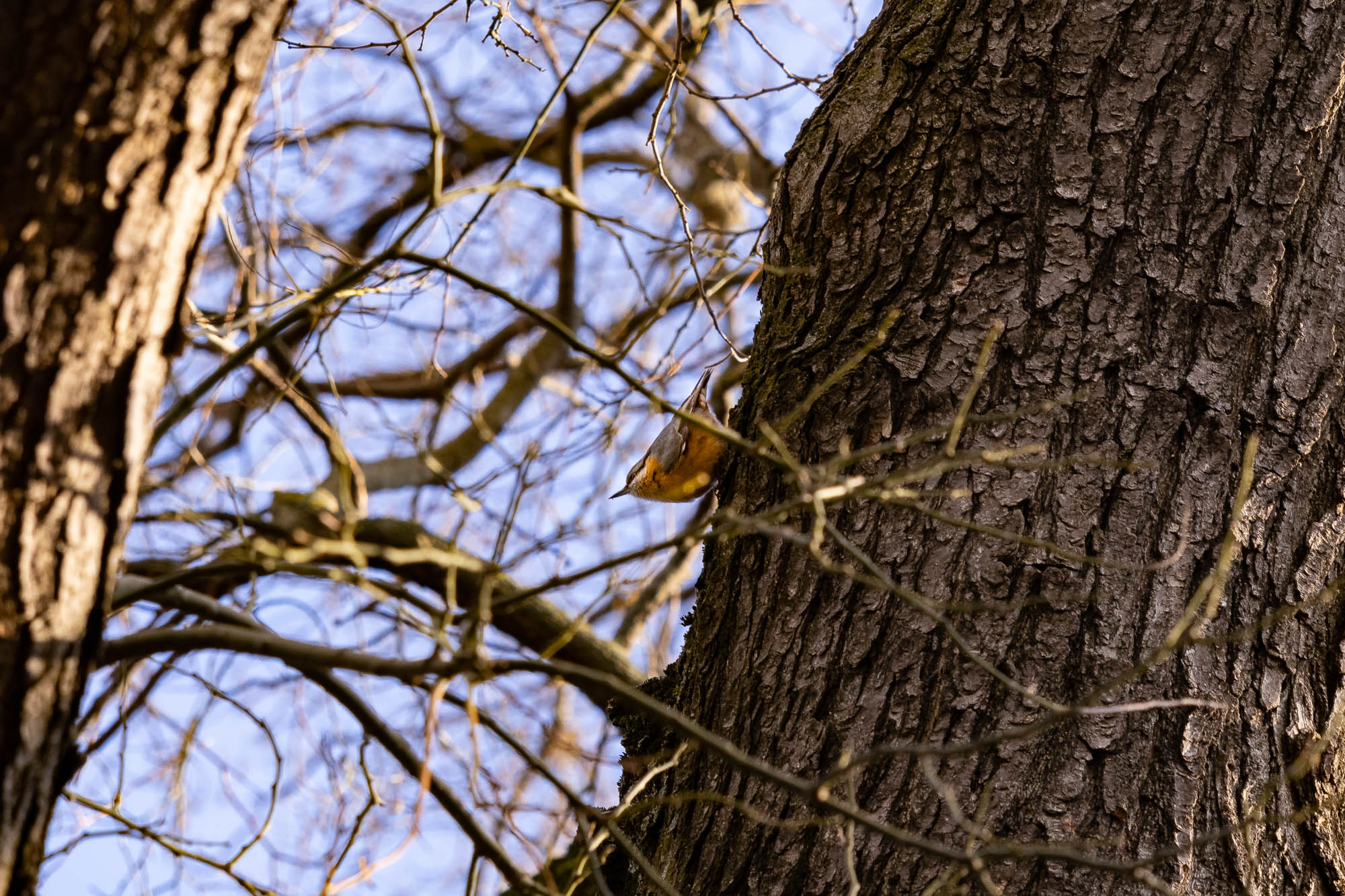Top attractions:
About European Nuthatch
The European nuthatch (Sitta europaea) is a small bird with a big personality. These charismatic birds spend most of their time on the trunks of trees and act as if they were little siblings of woodpeckers. Known for their impressive acrobatic abilities, European Nuthatch is hard to predict but fun to follow. These birds are truly fascinating, especially during the cold months in Northern Europe when many birds migrate towards the south.
While the European nuthatch is not as well-known in folklore and cultural traditions as some other bird species, it does appear in some stories and beliefs. In some parts of Europe, the nuthatch is considered a bird of good luck and is believed to bring prosperity and happiness to those who see it. In other traditions, the nuthatch is associated with the forest and is seen as a symbol of resilience and adaptability. While the European nuthatch may not have the same level of cultural significance as some other bird species, it is still an important part of the natural world.
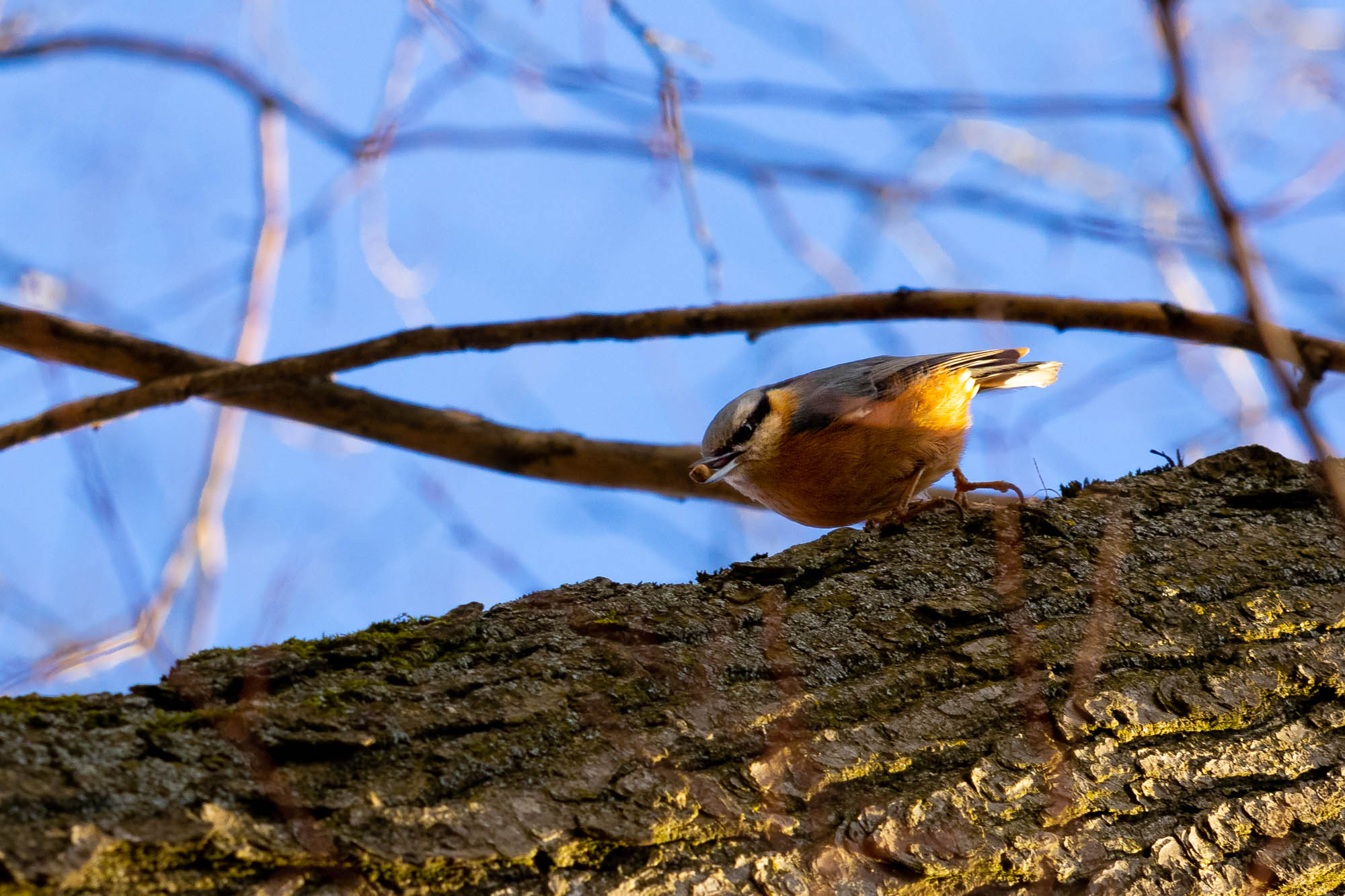
European Nuthatch is like a bird version of squirrel – always busy and fun to follow. Photo by A.L. [CC BY-SA 4.0], via Connecting the Dots
Details:
- Size: Length 13-15 cm / 5-6 in, wingspan 23-27 cm / 9-11 in
- Color: Blue-grey upperparts, rusty-red underparts, black stripe on eye, white throat
- Diet: Insects, seeds, nuts
- Distribution: Europe, Asia, North Africa
- Natural habitat: Deciduous and coniferous forests, parks and gardens
- Family: Sittidae (nuthatches)
- Conservation status: Least Concern (population stable)
Appearance
The European nuthatch is a small bird, measuring around 14 cm in length. It has a distinctive blue-gray back, a rusty-colored belly, and a black eye stripe that extends from its beak to the back of its head. Its strong legs and sharp claws are well-suited for its acrobatic lifestyle.
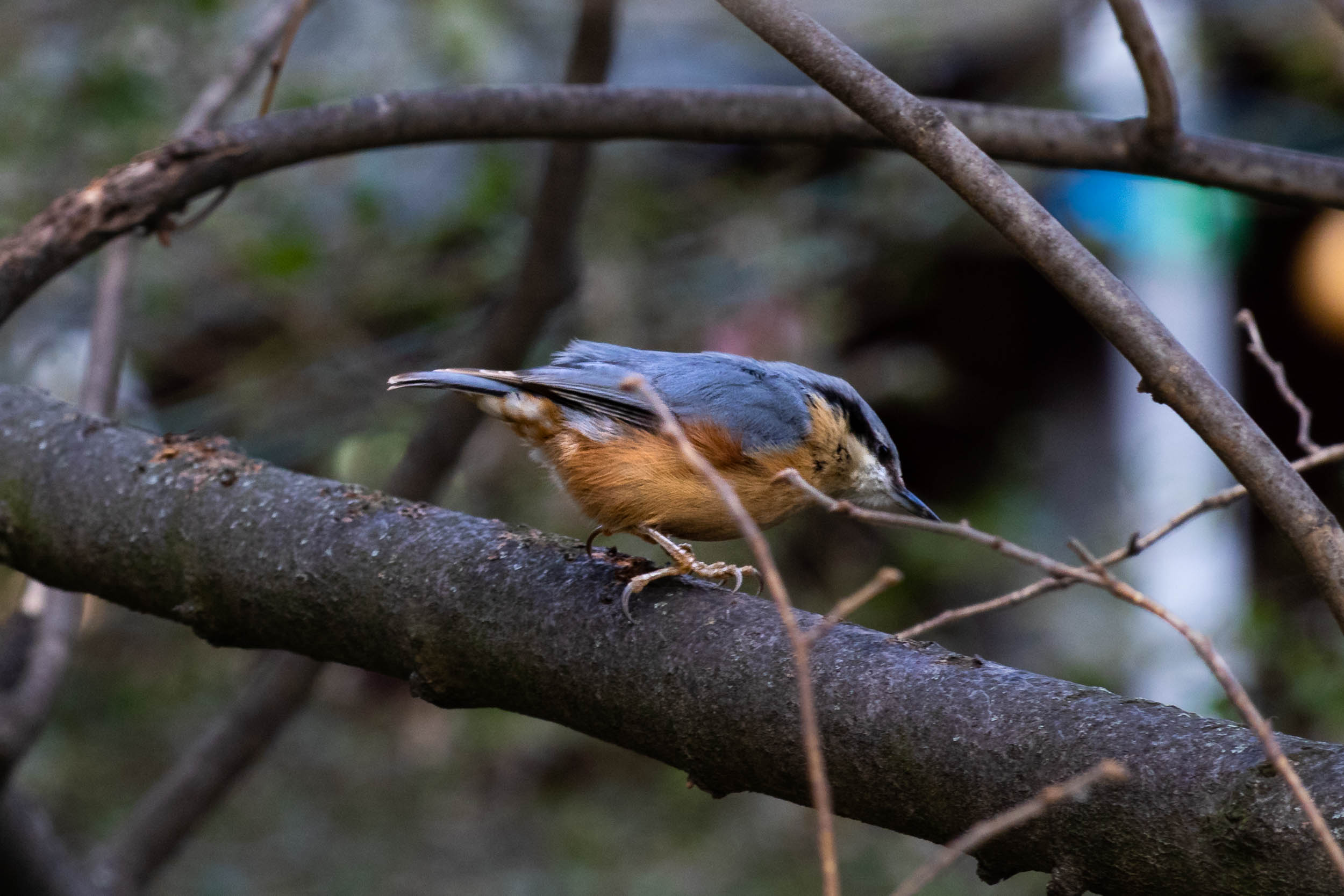
Colors of European Nuthatch turn brighter during the mating season. Photo by Alis Monte [CC BY-SA 4.0], via Connecting the Dots
Behavior
European nuthatch is a master of acrobatics. It is able to climb up and down trees, and even walk upside-down on branches and trunks. This is made possible by the bird’s unique foot structure, which includes a flexible joint in the middle toe that allows it to pivot its foot and cling to vertical surfaces.
The nuthatch is also known for its loud and distinctive calls. Its “yank-yank” call is a common sound in woodlands throughout much of Europe and is often heard before the bird is seen.
In terms of diet, the nuthatch is primarily insectivorous, but will also eat seeds and nuts. It stores food in crevices in trees and other hiding spots, allowing it to survive during times when food is scarce.
Conservation Challenges & Protection
Like many bird species, the European nuthatch is facing a number of conservation challenges. Habitat loss and fragmentation due to land-use changes, such as forest clearance and urbanization, are major threats to the nuthatch. Additionally, the loss of dead wood in forests reduces the availability of the bird’s preferred nesting sites, which can have a significant impact on populations.
To protect the European nuthatch and other woodland birds, it is important to prioritize the conservation of woodland habitats, especially those that contain a mix of dead and living trees. Additionally, limiting the use of pesticides and promoting sustainable forest management practices can help to maintain healthy habitats and support thriving populations of the European nuthatch.
Gallery of European Nuthatch
